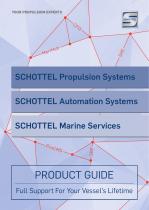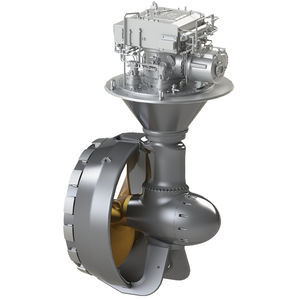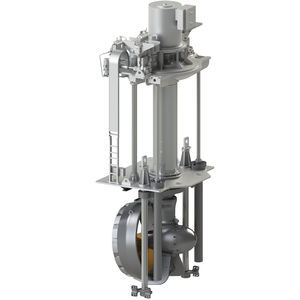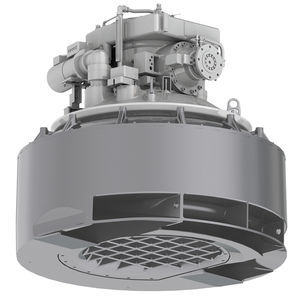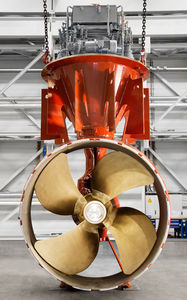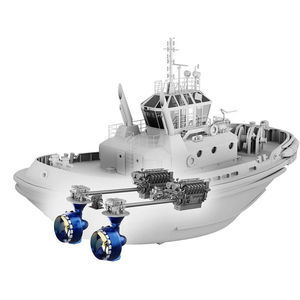

- Products
- Catalogs
- News & Trends
- Exhibitions
Azimuth thruster STP seriesrudderfor shipselectric
Add to favorites
Compare this product
fo_shop_gate_exact_title
Characteristics
- Type
- azimuth, rudder
- Application domain
- for ships
- Power source
- electric
- Other characteristics
- twin counter-rotating propellers
- Power
Max.: 3,200 kW
(4,350.8 hp)Min.: 190 kW
(258.3 hp)
Description
Efficient, low cavitation, streamlined – the SCHOTTEL TwinPropeller is the ideal propulsion solution for vessels or applications with limited installation space, draught or propeller clearance. Based on the principle of the proven SRP, the STP ensures combined thrust and 360-degree manoeuvring power with its two co-rotating propellers. Distributing the load over two propellers boosts the propulsion system’s efficiency and noise and vibration levels underwater and on board are reduced to a minimum.
Advantages
At a glance
Increased level of efficiency
Reduced noise and vibration levels
Especially suitable for applications with limited propeller diameter
Numerous installation variants
Minimal maintenance effort, long-term availability of spare parts as OEM
SCHOTTEL-exclusive features: SCHOTTEL LeaCon or DuroVario (optional)
Two propellers for more power
The two co-rotating propeller design increases the propulsion system’s efficiency and reduces fuel consumption compared to single propeller systems. The load distribution minimizes the risk of cavitation and increases the clearance – the result: higher propulsion efficiency and lower noise levels.
Catalogs
SCHOTTEL Propulsion Systems
20 Pages
Exhibitions
Meet this supplier at the following exhibition(s):

*Prices are pre-tax. They exclude delivery charges and customs duties and do not include additional charges for installation or activation options. Prices are indicative only and may vary by country, with changes to the cost of raw materials and exchange rates.

